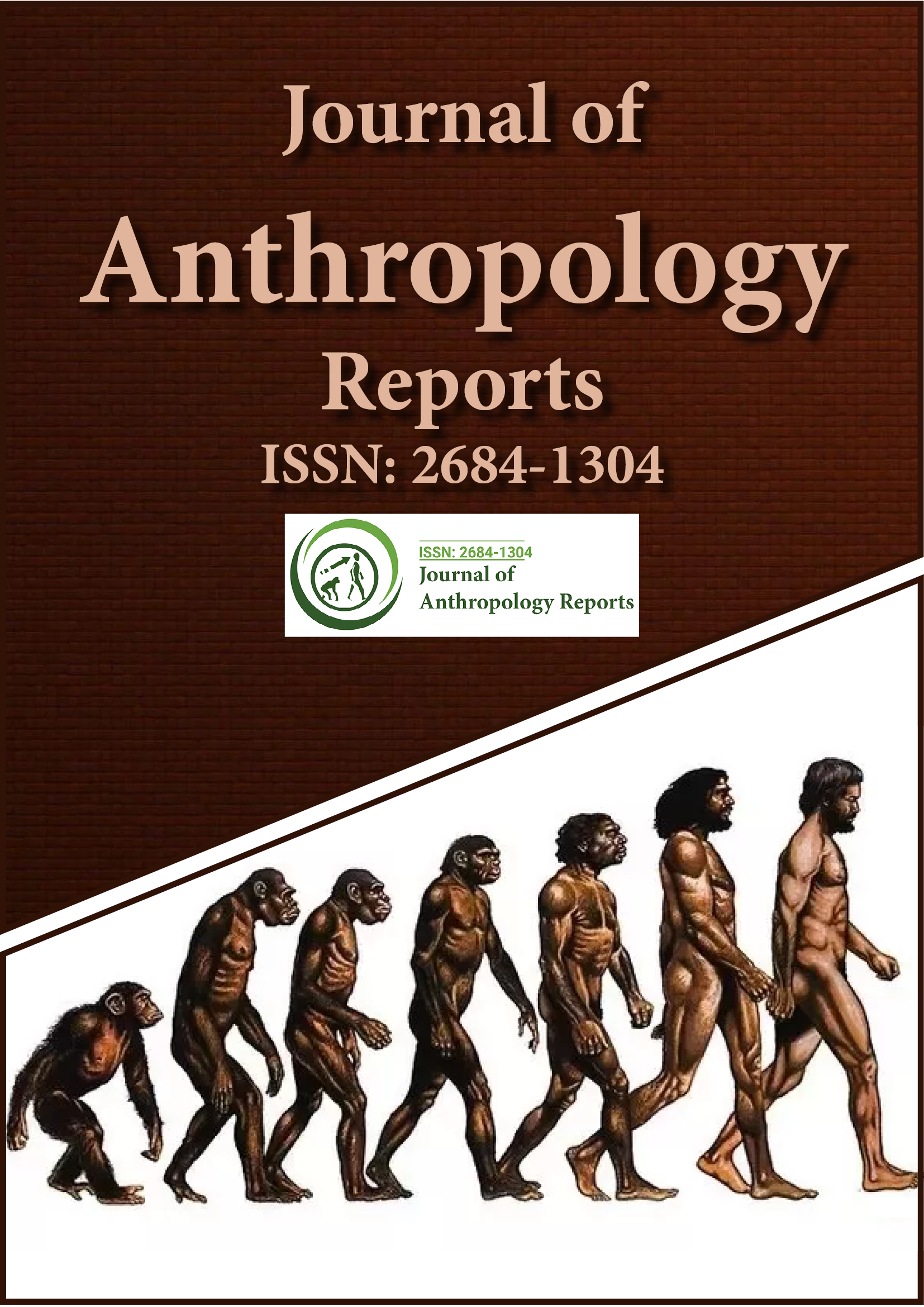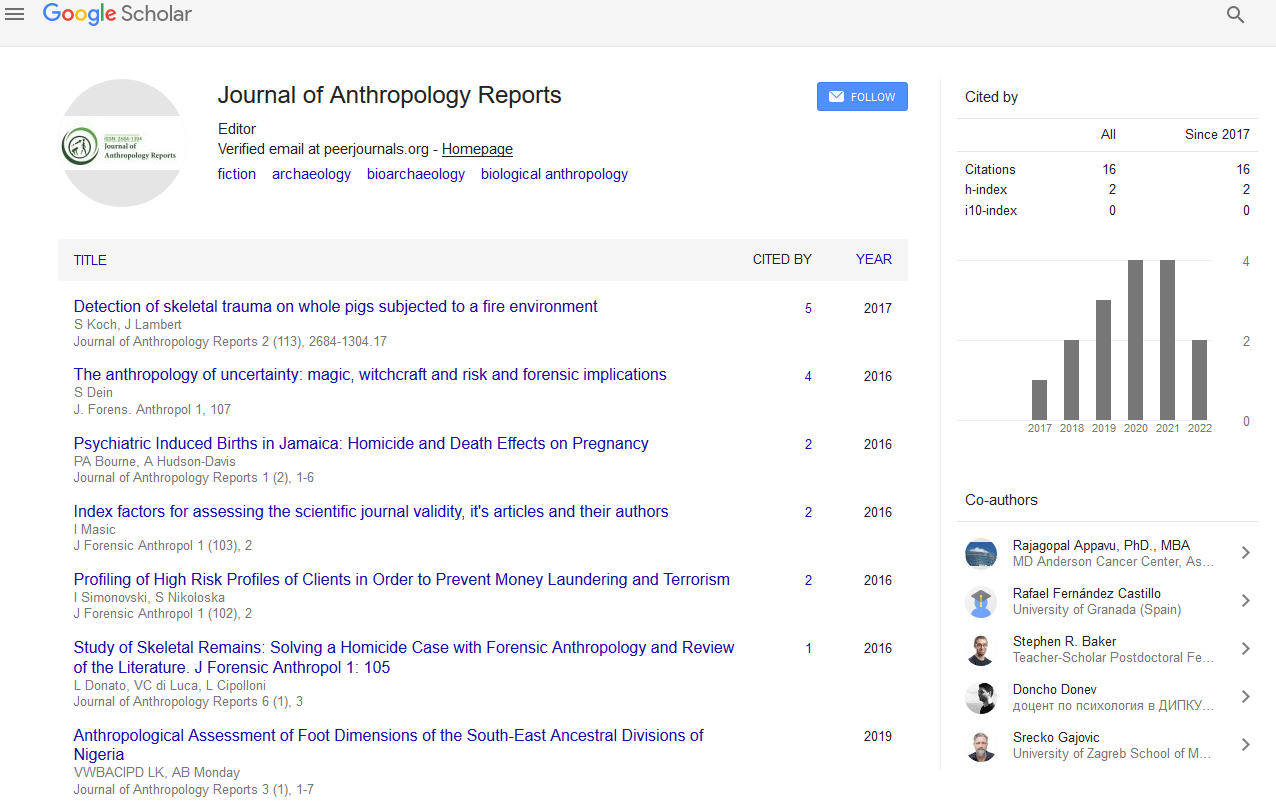Indexed In
- RefSeek
- Hamdard University
- EBSCO A-Z
Useful Links
Share This Page
Journal Flyer

Open Access Journals
- Agri and Aquaculture
- Biochemistry
- Bioinformatics & Systems Biology
- Business & Management
- Chemistry
- Clinical Sciences
- Engineering
- Food & Nutrition
- General Science
- Genetics & Molecular Biology
- Immunology & Microbiology
- Medical Sciences
- Neuroscience & Psychology
- Nursing & Health Care
- Pharmaceutical Sciences
Perspective - (2024) Volume 7, Issue 3
The Evolutionary Ecology of Inequality: Biological and Ecological Perspectives
Nikos Alexandrou*Received: 30-Aug-2024, Manuscript No. JFA-24-28379; Editor assigned: 02-Sep-2024, Pre QC No. JFA-24-28379 (PQ); Reviewed: 16-Sep-2024, QC No. JFA-24-28379; Revised: 23-Sep-2024, Manuscript No. JFA-24-28379 (R); Published: 30-Sep-2024, DOI: 10.35248/2684-1304.24.7.204
Description
The relationship between social structure and the evolutionary ecology of inequality is a complex subject that provides interesting insights into the dynamics of human societies. By investigating how social hierarchies have evolved and how they formed by, ecological and evolutionary forces, we can better understand the deep-rooted patterns of inequality that persist across cultures and time periods. Inequality, particularly social inequality, has become a defining feature of human civilizations, yet its origins and persistence can be understood through the lens of evolutionary biology and ecological interactions.
Social structure refers to the organized patterns of relationships and institutions within a society that dictate how individuals and groups interact. These structures are often hierarchical, with some individuals or groups holding more power, wealth and status than others. Over time, these patterns have become institutionalized, creating systems that perpetuate inequality. From a biological perspective, social hierarchies can be seen as an evolutionary adaptation to the challenges of resource allocation, reproduction and survival. In this context, inequality is not necessarily an undesirable byproduct but a potential mechanism that helps in organizing human societies in a way that maximizes efficiency, stability and reproductive success.
The evolutionary ecology of inequality focuses on the ways in which human societies, like other species, have adapted to their environments and how these adaptations often result in unequal distributions of resources. For example, competition for scarce resources-be it food, shelter, or mates-often results in the formation of hierarchies, with dominant individuals or groups gaining better access to these resources. This competition is not limited to direct interactions but extends to indirect mechanisms such as alliances, trade and political control. Over time, the individuals or groups with access to resources are better positioned to thrive, leading to the persistence of social inequality.
Moreover, evolutionary ecology suggests that social inequality can be adaptive in specific ecological contexts. For example, in environments where resources are abundant, egalitarian societies may emerge, as there is less competition for survival. However, in harsher, resource-scarce environments, stratified societies may be more efficient at managing resources, as they concentrate power in the hands of a few, thereby ensuring that resources are allocated in a manner that maximizes survival. This phenomenon can be observed in many historical and contemporary societies, where the social structure adapts to the environmental pressures the group faces.
Another aspect of the evolutionary ecology of inequality is the role of kinship and nepotism in the development of social hierarchies. Evolutionary theories of kin selection emphasize that individuals are more likely to favor relatives, as doing so increases their inclusive fitness. This kin-directed altruism can lead to the concentration of power within certain family units or clans, contributing to the establishment of unequal power structures. In many societies, these kin-based hierarchies have evolved into more complex forms of social inequality, where wealth and power are passed down through generations, often solidifying the dominance of certain groups.
Social hierarchies also emerge through the concept of status competition, which is prevalent in both human and non-human species. Status confers various benefits, such as increased access to resources, better mating opportunities and greater social influence. In human societies, the quest for status drives much of the inequality that we observe, as individuals or groups strive to secure higher positions in the social hierarchy. The need for social recognition, combined with the differential ability of individuals to gain resources and opportunities, leads to a stratified society where inequality is perpetuated over time.
In conclusion, the social structure and evolutionary ecology of inequality are inextricably linked. Social hierarchies have evolved as adaptive mechanisms in response to ecological pressures, resource scarcity and competition for survival. At the same time, these hierarchies are reinforced by cultural, institutional and social forces that perpetuate unequal access to resources and opportunities. Understanding the evolutionary ecology of inequality offers a deeper insight into the persistence of social disparities and provides a framework for addressing them. By recognizing the complex interplay between competition, cooperation and social structures, we can begin to think about how to create more equitable societies that balance the needs of all individuals.
Citation: Alexandrou N (2024). The Evolutionary Ecology of Inequality: Biological and Ecological Perspectives. J Anthropology Rep. 7:204.
Copyright: © 2024 Alexandrou N. This is an open-access article distributed under the terms of the Creative Commons Attribution License, which permits unrestricted use, distribution, and reproduction in any medium, provided the original author and source are credited.

